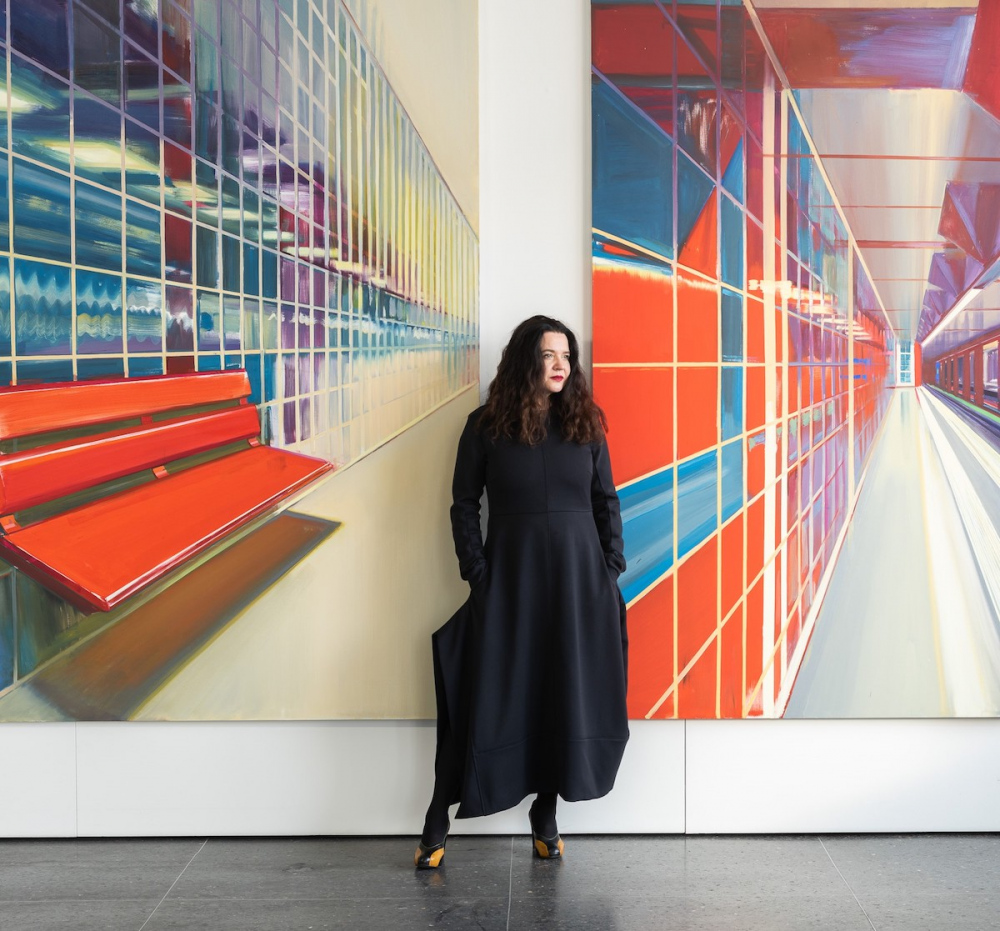Photo: J. Deinats
Vineta Kaulača is a visual artist based in Riga, Latvia. She studied at the Art Academy of Latvia, at the Humboldt State University in USA and the Berlin University of the Arts.
Her recent exhibitions include “(un) determined" 17th International Vilnius Painting Triennial at the Applied Arts an Design Museum of the Lithuanian Art Museum, Vilnius, Lithuania(2020/2021); Forces, Art Number 23 Gallery, London, UK (2020), slolo show Waiting Room, Māksla XO Gallery(2020), Traume sind Raume, (V.Kaulača,S. Daugule), Kunstraum Gallery, Vienna, Austria(2019), international group exhibition Location/Dislocation. Between Remembering and Forgetting II initiated by V.Kaulača and co curated with Inga Šteimane at the Art Station Dubulti, Daugavpils Mark Rothko Art Center, (2019, 2020), solo show Kaleidoscope at the Permanent Representation of Latvia to the European Union, Brussels, Belgium(2017), Arte Laguna Prize finalists exhibition at the Arsenale, Venice, Italy (2017); Hiperrealism_-Movement Manifestations in Latvia curated by Dr.art. E.Ansone, exhibition hall Arsenals of the Latvian National Museum of Art, Riga, Latvia (2017); solo exhibition Surface Memory at the Māksla XO gallery, Riga, Latvia (2016); Failed Utopias curated by Alex Veness at the No.4A gallery, Malvern, UK (2016); The London Intensive at the Camden Arts Centre, London, UK (2015); Latvian Art Month, Abu Dhabi Art Hub and Jumeirah& Etihad Towers, Abu Dhabi, United Arab Emirates (2015); Latvian Contemporary Art, European Parliament, Brussels, Belgium (2015); ”Transfers / 56°56′51″N 24°6′23″E” at the Joyart Gallery, 798 Art Zone, Beiing, China (2014); NordArt2013, juried exhibition, Kunstwerk Carlshütte, Büdelsdorf, Germany (2013); Centre-Periphery, Palazzo delle Esposizione, Rome (2012).
V.Kaulača is the nominee for the Purvītis Prize 2013 which is the most prestigious and the most substantial art award in Latvia supported by the SIA Alfor and the Latvian National Museum of Art. She is the winner of the juried competition Centre-Periphery organized by Federculture Italia. She has been awarded numerous scholarships including: Braziers International Artists Workshop and Arts Council England’s International Fellowship (UK); Art Hub artist residency, Abu Dhabi (United Arab Emirates); The Irish Museum of Modern Art Residency Programme, Dublin (Ireland); Triangle Artists Workshop, New York (USA); Cite Internationale des Arts residency, Paris (France); Raid Projects artist’s residency, Los Angeles (USA) as well as received a multiple bursaries from the State Culture Capital Foundation.
Her artworks are included in public collections such as:
- Art in Embassies US Department of State,
- Collection of European Parliament,
- Collection of Latvian National Museum of Art,
- ABLV Bank Art Collection,
- Swedbank Contemporary Art Collection,
- Unibank Art Collection,
- DnB Nord Bank Collection,
- Federculture Italia.
Artist’s Statement
My work aims at illustrating the ambiguity and relativity of perception: the way we look at the world building up an image of the whole from different parts and fragments, based on our emotional relationships with and intellectual experiences of any particular image. In perceiving we rely on the role of time and distance in this process of seeing without even being aware of this. My findings apply to the both - time and space as the dimensions that are invisible themselves but can be determined by the movement, changes and distance. I am particularly interested in applying my findings as a painter to other media to synthesize new ones and to benefit from the synergy with the other media like drawing, photography, cinematography and installation.
I am trying to capture a delicate in-between state, a border-situation between remembering and an oblivion, indicating no chance to experience something for the second time — that lets us realize continuity, the nature of time which is pointed towards the future. “The moments of physical time lack structure and they are empty, at the same time the moments of the time that have survived always possess structure and contents,” argues Tronn Berg Ericksen.
I use photos – capturing the elusiveness of a look and indicating pauses, detours and delays –to document the trajectory of the observing eye, cast around, meeting the world. While painting, I have the opportunity to grant materiality to and to transform in a substance-based object that what has no physical substance – a gaze, without trying to attain perfection of an optical transmission and leaving space for the point of reference – a snapshot and reason why it was made. With the help of memory, the reproduced event has created an entirely new place, a so far non-existent space of consciousness, even though preliminary coordinates can be found on a map of space and time.
